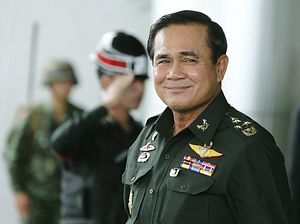Last week, the Thai government announced new defense budget figures for 2020. The release of the figures spotlighted the broader issue of the extent of continuity and change in Thailand’s defense posture following the holding of the first election held earlier this year since a coup back in 2014.
As I have noted before in these pages, over the past decade or so, Thailand, a U.S. treaty ally, has had one of Southeast Asia’s highest levels of defense spending but has generally lagged behind the regional average percentage-wise in terms of government expenditures and GDP. And while the military junta which came to power in May 2014 has not been able to get the budget increases that it has wanted due to a range of factors – including economic underperformance and related domestic scrutiny – annual defense budgets have nonetheless been analyzed as a litmus test for how the government has been prioritizing security concerns relative to other priorities such as education.
That has continued on over the past year as well. Indeed, during the lead up to Thailand’s repeatedly delayed election which was finally held in March and returned junta leader Prime Minister Prayut Chan-o-cha to power, the ruling junta directly and publicly struck back at rival political parties for their calls for double-digit cuts to the defense budget. And even when the initial budget figures were released last week, there was scrutiny on individual aspects including security spending for the monarchy.
This week, Thailand’s defense posture was in the headlines again with news that the cabinet had approved a new defense budget. The figures had been anticipated since they constituted the first defense budget since the election held earlier this year, with Prayut now holding the post of premier as well as defense minister.
Per figures that were released by the government, the cabinet approved a 2020 defense budget that amounted to 233.35 billion Thai baht (about $7.6 billion). At a surface level, the amount itself represents yet another consecutive round of defense spending increase under the junta government, with a 2.7 percent rise over the initial defense budget figure from 2019. But within that pattern of increases, the increase this year is in fact more modest than in previous years. Indeed, it is closer to the numbers proposed for the 2017 defense budget at around 2 percent, rather than the increases that followed for 2018 and 2019 which were of 5 percent and 4.2 percent respectively.
Additionally, despite the modest increase in the budget for this year, the figures remain at around the same level in terms of government spending and percentage of GDP. The defense budget this year effectively means it constituted about 7 percent of government expenditure and 1.4 percent of GDP, which tracks with the numbers in 2019 as well. The 1.4 percent of GDP figure is significant because it is a tangible manifestation of Thailand’s inability to meet the ambitious target of 2 percent of GDP that Thai policymakers had for its future military modernization, not unlike some other neighboring Southeast Asian states. Some aspect of continuity is evident even beyond the aggregate figures: within the total defense budget for instance, about half of it goes to the Royal Thai Army (RTA), reinforcing the continuing dominance of the army.
That is not to say that it is all continuity in Thailand’s future defense posture. We will likely get a better sense of the extent of change once we get to more granular metrics – be it ongoing shifts in the composition of key defense partners or big line items in the budget such as the progress on the purchase of Chinese submarines, which is ongoing but remains slow. And in terms of the defense budget, as with previous years, we will likely see increases being managed in accordance with several variables including popular perceptions and the state of the Thai economy. As ever, while individual defense budget numbers can provide a snapshot of where a country is at a particular time in its spending, a more detailed sense of where it is and where it is headed in terms of its wider security outlook will require going well beyond a single aggregate figure and the headlines it generates.

































